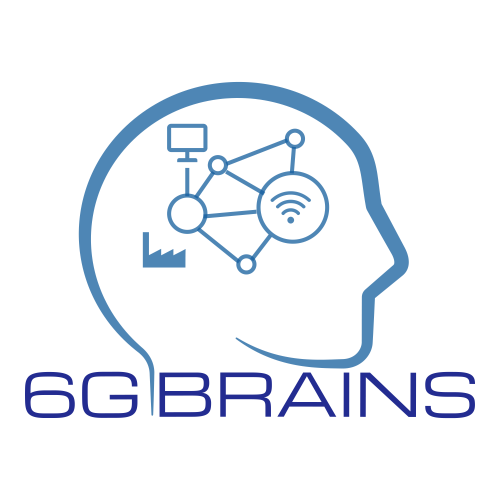Channel sounding makes possible the characterization of propagation in different bands of interest for Industry 4.0. Simultaneous multi-band sounding decrease the measurement time and allows a fair comparison between the different bands. The identification of common scatterers and similarities and differences on multiple propagation aspects enables the development of advanced multi-band models for different applications as JRC, SLAM, ISAC, etc. In addition, accurate 3D CAD models for ray-tracing can be obtained from laser scans. After these models are validated with measurements, they are used to facilitate the simulation of different use cases and applications, adding flexibility and speeding up the design of the future radio-interfaces.
I am text block. Click edit button to change this text. Lorem ipsum dolor sit amet, consectetur adipiscing elit. Ut elit tellus, luctus nec ullamcorper mattis, pulvinar dapibus leo.
The combination of Cell-Free massive multi-input multiple output (CF massive MIMO) and NOMA yields significant spectral efficiency (SE) gains to support the exponentially increasing application demands and benefit to hybrid multiple access in future 6G systems.
CF massive MIMO over high dynamic D2D clusters: Firstly, CF massive MIMO, uses a large number of spatially distributed access points (APs) (such as IABs or RmUEs), which are connected to a central processing unit (CPU) (such as the intelligent IAB), to serve many users without cell boundaries (cell-free). CF massive MIMO systems over the ultra-dense D2D CF networks have a large number of individually controllable antennas distributed over a wide area for simultaneously serving a small number of mUEs. Since there is a high probability that every mUE is surrounded by a large number of serving RmUEs, all mUEs may have good channel conditions. Therefore, 6G BRAINS proposes CF massive MIMO over dynamic cooperated D2D clusters (DCC), which is a user-centric approach where each mUE is served by the RmUE subset providing the best channel conditions.
GF NOMA with CF massive MIMO: Secondly, GF-NOMA, serves multiple users simultaneously by exploiting channel gain disparities and applying successive interference cancellation (SIC) based detection. Massive D2D clusters will be generated according to the aggregation and the behaviour of machines or human beings. RmUEs/mUEs in each cluster can be intelligently managed and served via D2D connection by using NOMA, while different D2D clusters can employ orthogonal multiple access (OMA) for simultaneous communication. When introducing NOMA into CF networks, the secondary user can efficiently cooperate with the primary user and obtain spectrum access opportunities to improve network spectrum efficiency and capacity. Many challenges will be faced when employing NOMA in D2D, such as complex precoding mechanism in each NOMA group and co-channel interference management among UEs in the same sub-channel. To this end, accurate beamforming based on intelligent channel estimation and dynamic precoding techniques will be employed for each UE to compensate for the additional power requirements caused by the increased interference and noise. D2D-aided cooperative NOMA in primary networks can be achieved by selecting proper mUE as NOMA relay which can establish D2D connections to mUEs in the nearby NOMA group. Furthermore, a D2D relay will be established also for the uplink of the Grant Free access.
6G BRAINS envisions advanced network slicing, which will be substantially optimized for the targeted Industry 4.0 use cases. New enablers would include novel AI-based RAN slicing to maximize the usage of radio resources and thus network capacity with RAN QoS warranty, novel cost-effective hybrid backbone network slicing to achieve optimal trade-off of performance and cost-efficiency whilst meeting the E2E QoS requirements, and E2E intelligent IAB and backbone network slice management and orchestration optimized for various use cases.
Optical Wireless Communications (OWC) Received Signal Strength (RSS), mmWave Angle of Arrival (AoA) and Time Difference of Arrival (TDoA), Inertial Measurement Unit (IMU) data) to obtain location accuracies of less than 1cm for anchor mobile User Equipments (mUE) and 10 cm accuracy for IoT mobile User Equipment that are networked with three or more anchor mUEs.
The 6G-BRAINS project aims to develop an accurate model of the OWC communication channel in an Industry 4.0 environment. To this end, measurement campaigns will be organised in a Bosch factory. They will be based on the use of a multi-technology channel sounder, capable of measuring the impulse responses of OWC transmission channels as well as millimetre wave and terahertz ones. From the acquired data, a unified theoretical channel model for these three frequency ranges will be established. In this way, the parameters of future deployments of OWC technology in an Industry 4.0 environment (access point position, orientation, optical power, etc.) can be planned by simple simulations. The work leading to these results is currently focused on the implementation of the channel sounder (e.g. manufacturing of the OWC front-end, validation tests and integration into the existing channel sounder).
Intent Networking is a novel approach for network controller northbound interfaces, which uses declarative modelling languages to describe services requests. By using Intents, users can focus on the desired state instead of having to deal with low-level details regarding the configuration of their network infrastructure. In 6G-Brains, an intelligent virtual assistant is being developed with the ability to receive administrator’s intents that govern the automation of their end-to-end infrastructure, comprising both network and compute resources. Herein are included traditional manual processes such as service provisioning, resource configuration, lifecycle management of applications and automated response to infrastructure issues. Additionally, by enabling virtual assistants with intent networking capabilities, administrators and business owners can use natural language instead of having to understand complex network terminologies and focus on their core business.
The future 6G systems will have to fulfil different user and QoS requirements in changing environments that are complex network structures, and enhance the performance with regard to capacity, reliability and latency. 6G-BRAINS aims to leverage Artificial Intelligence (AI) techniques and especially Reinforcement Learning (RL) to support advanced automation of the network’s resource management (e.g., communications, slice, compute and storage resources).
With RL, future 6G systems can learn to operate in a dynamic environment by making suitable decisions that lead to long term high performance. RL learns from relatively simple feedback received and from a batch of previous experiences. This batch of experiences can be the history of the tests that the system has performed in the real environment (online RL). Alternatively, when tests of alternative behaviors are difficult or dangerous to operate on the real environment, the RL system can also leverage experiences collected by other distinct 6G systems (offline RL). Deep Reinforcement Learning (DRL) uses artificial neural networks to increase the representation capacities of the agent and scale up in more complex states and decisions. 6G-BRAINS will enable training and deploying RL-based resource allocation strategies at different levels of the network thanks to its modular Multi-Agent Deep Reinforcement Learning (MA-DRL) scheme. This scheme will define the role of each element of the network in terms of executing, learning or providing feedback for the network management policies. 6G-BRAINS also aims to create systems that could adapt to potential changes in the dynamics of the environment.
The 6G-BRAINS project aims to utilize an Integrated Access and Backhaul (IAB) approach to connect a massive number machines within the factory to the computing edge. To this end, 6G-BRAINS plans to extend upon the Open Air Interface (OAI) 5G RAN project as either IAB Donor or gNodeB of several Proof-of-Concept demos at the factory of Bosch. Specifically, the gNodeB is expected to do proactive and adaptive “directional slicing”, that is, to optimally multiplex heterogeneous network services onto a single space-frequency-time resource grid, and to adapt well to changing manufacturing requirements. The challenges associated with such goal is planned to be solved with ML-based scheduling over virtualized resource blocks.
Industrial manufacturing represents one of the largest new application areas for the latest generations of the mobile communications. At the same time, the vision of the factory of the future sets together one of the most challenging list of requirements on the communication systems including very high reliability and robustness, determinism in a part of the data traffic combined with very high flexibility and dynamics in other parts, very precise synchronicity, ultra-low transmission latency and the highest security, etc. In the factory of the future, the only things that are static and fixed are the floors, walls, and ceilings. The factory of the future is planned to constantly reinvent itself as needed. It will be guided by a vision of a manufacturing set-up that can produce thousands of different products and variants, down to a batch size of one, without the need for expensive retrofitting. For all that, wireless communication is one the main enablers for the factory of the future and is a vital part of the IT architecture core.





